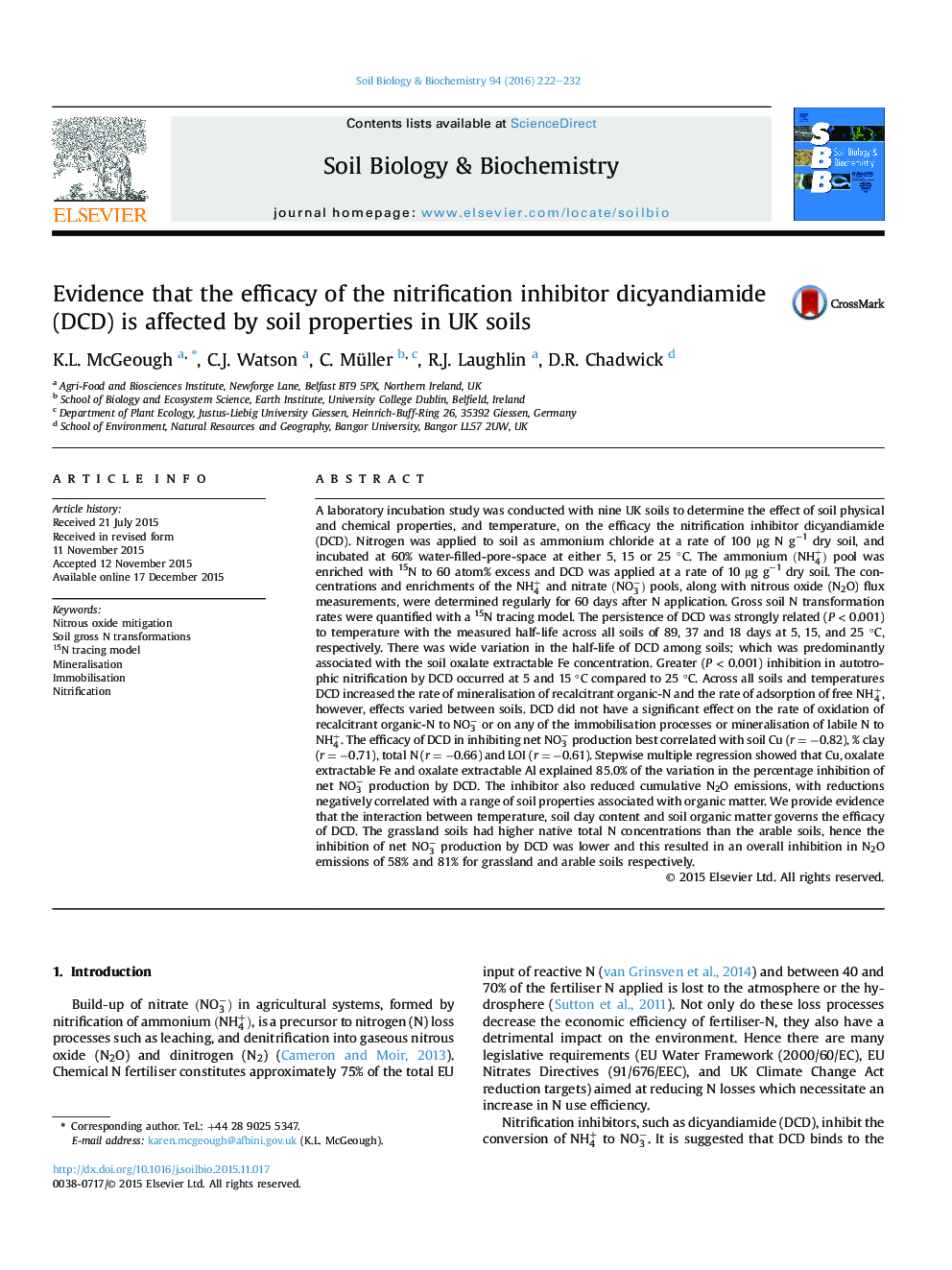| Article ID | Journal | Published Year | Pages | File Type |
|---|---|---|---|---|
| 8363628 | Soil Biology and Biochemistry | 2016 | 11 Pages |
Abstract
A laboratory incubation study was conducted with nine UK soils to determine the effect of soil physical and chemical properties, and temperature, on the efficacy the nitrification inhibitor dicyandiamide (DCD). Nitrogen was applied to soil as ammonium chloride at a rate of 100 μg N gâ1 dry soil, and incubated at 60% water-filled-pore-space at either 5, 15 or 25 °C. The ammonium (NH4+) pool was enriched with 15N to 60 atom% excess and DCD was applied at a rate of 10 μg gâ1 dry soil. The concentrations and enrichments of the NH4+ and nitrate (NO3â) pools, along with nitrous oxide (N2O) flux measurements, were determined regularly for 60 days after N application. Gross soil N transformation rates were quantified with a 15N tracing model. The persistence of DCD was strongly related (P < 0.001) to temperature with the measured half-life across all soils of 89, 37 and 18 days at 5, 15, and 25 °C, respectively. There was wide variation in the half-life of DCD among soils; which was predominantly associated with the soil oxalate extractable Fe concentration. Greater (P < 0.001) inhibition in autotrophic nitrification by DCD occurred at 5 and 15 °C compared to 25 °C. Across all soils and temperatures DCD increased the rate of mineralisation of recalcitrant organic-N and the rate of adsorption of free NH4+, however, effects varied between soils. DCD did not have a significant effect on the rate of oxidation of recalcitrant organic-N to NO3â or on any of the immobilisation processes or mineralisation of labile N to NH4+. The efficacy of DCD in inhibiting net NO3â production best correlated with soil Cu (r = â0.82), % clay (r = â0.71), total N (r = â0.66) and LOI (r = â0.61). Stepwise multiple regression showed that Cu, oxalate extractable Fe and oxalate extractable Al explained 85.0% of the variation in the percentage inhibition of net NO3â production by DCD. The inhibitor also reduced cumulative N2O emissions, with reductions negatively correlated with a range of soil properties associated with organic matter. We provide evidence that the interaction between temperature, soil clay content and soil organic matter governs the efficacy of DCD. The grassland soils had higher native total N concentrations than the arable soils, hence the inhibition of net NO3â production by DCD was lower and this resulted in an overall inhibition in N2O emissions of 58% and 81% for grassland and arable soils respectively.
Related Topics
Life Sciences
Agricultural and Biological Sciences
Soil Science
Authors
K.L. McGeough, C.J. Watson, C. Müller, R.J. Laughlin, D.R. Chadwick,
